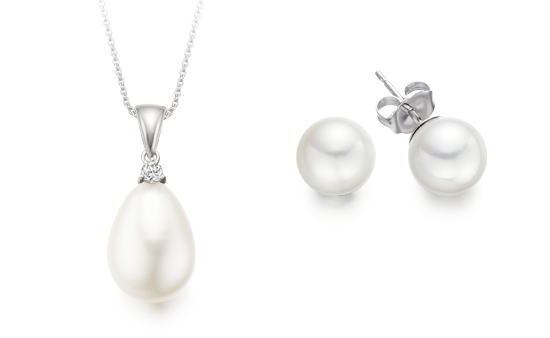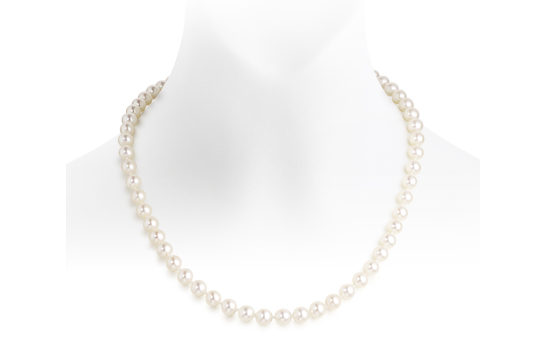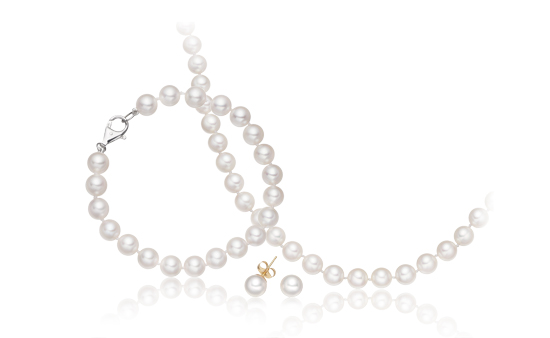Tagged with 'Freshwater pearls'


The very latest news, musings and opinions from the world of Winterson. Quite simply, a celebration of a jewellery, fashion, culture and the business behind luxury.
-
Introducing the Lief Collection to Winterson
Introducing the Lief Collection to Winterson
This week we are delighted to launch a new collection of jewellery called Lief, which is also the old English word for "Beloved".
The newly launched Lief collection has been designed by our new Creative Director Alice Cicolini, who first began working with Winterson in 2013.
ALICE CICOLINI
Alice is a successful jewellery designer, creative commissioner and producer, with her work currently being stocked at Net-A-Porter, Dover Street Market, Urban Flower Grange Hall and Colette.
Her first collaborative collection with us called ‘Beau’ - a flamboyantly British range of seed pearl jewellery – is available exclusively at Winterson.
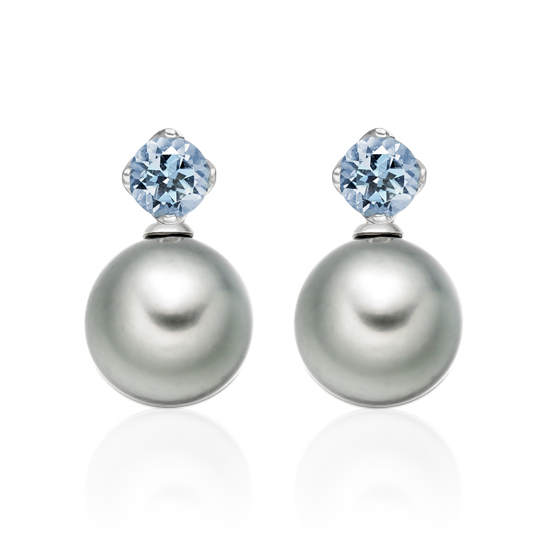
In her official Winterson role, Alice will be responsible for the creative conception and product development of the classic, bridal and fine jewellery collections at Winterson. She will also establish and manage our exclusive collaborations with other up and coming British designers.
Alice brings a distinctive style and influence to our jewellery that has already inspired our customers with her Beau collection, rings and earrings. We are delighted to welcome her fully to our team.
THE INSPIRATION FOR LIEF
The new Lief collection is based on the Winterson brand motif, which is inspired by a wild northern flower called Linnaea Borealis.

This little alpine twinflower is named Carl Linnaeus, a world renowned Swedish botanist who is also believed to have been the first to culture successfully a spherical cultured pearl.
Alice's designs for Lief are an exquisite fusion of colourful gemstones and diamonds with Winterson’s signature pearls. Clever interchangeable design allows the wearer to create different looks across the collection, from everyday to the more formal.
Three designs beautifully capture the essence of spring and colour and will be an exciting range of enduring classics to treasure.
LIEF, ENCHANTED AND ENTWINED
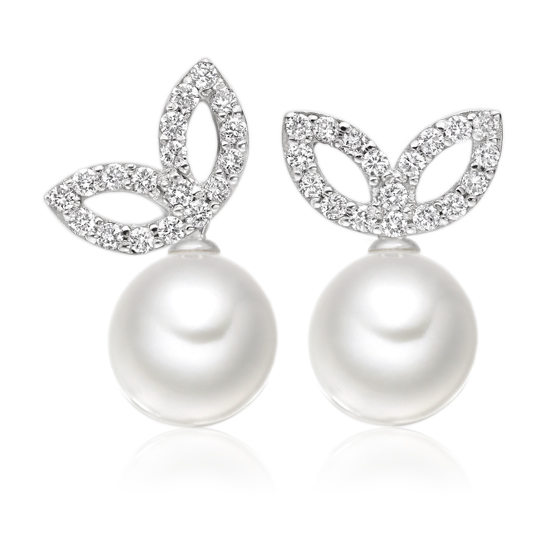
The new Enchanted Diamond Earrings sparkle with 36 ice clear gems and are finished in white and yellow gold. Stunning on their own, they can also be combined with a selection of our carefully chosen pearls, crafted with an 18 carat gold loop and expertly designed to fit the Lief stud earring earpost.
New elegantly understated studs also join the range with a beautiful selection of gemstones to tempt, from soft Morganite and Green Beryl, to vibrant Pink Tourmaline, Aquamarine and Amethyst. Each stud earring can be paired with white Akoya or Freshwater Drop pearls, naturally grey Tahitian pearls, or simply worn on their own.
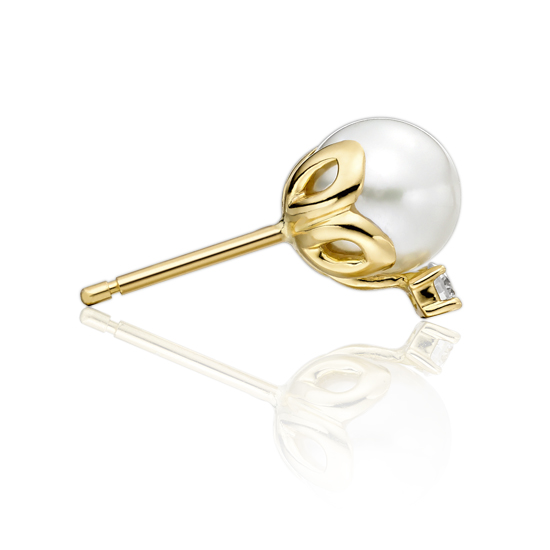
New Entwined Pearl Stud Earrings feature wild gold leaves, entwined around a pair of white Akoya pearls and adorned with two round white sparkling diamonds.
Discover the Lief collection here.
-
Three Pearl Trends For 2014
Three Pearl Trends For 2014
The world of the cultured pearl is always changing, with each year bringing a new set of pearl trends to discover as pearl farmers adapt their production and develop new techniques.
Our buying team recently returned from Asia with a stunning selection of the highest quality pearls for our collections of jewellery at Winterson, being carefully chosen for their lustre, colour and beauty.
But there were a few surprises too.
Here are our reflections from the visit and a prediction of pearl trends for the coming year:
SMALL SIZES…
Pearls above 11mm in diameter command a significant premium for their rarity, particularly for the highest quality South Sea and Tahitian pearls.
But this year more than ever before, we noticed that pearl sizes smaller than 7-8mm diameter, for the Akoya pearl and even seed pearls as small as 1-2mm, are very much in demand for necklaces, earrings and other types of jewellery.
Comfortable to wear and elegantly proportioned, these are the classic pearl sizes for a jewellery designer to work with.
THE EVER CHANGING FRESHWATER PEARL…
The shift in production and demand for Freshwater pearls over the past thirty years has been significant, with small cereal shaped pearls being steadily replaced by the introduction of rounder shapes, and more recently by larger nucleated pearls.
This year really is no exception. Round nucleated Freshwater pearls are now widely available in sizes above 12mm. The trend of the last few years towards large oversized baroque shapes in contemporary jewellery seems to be falling out of fashion.
Perhaps more concerning was the apparent level of processing treatment of some of the larger pearl sizes. Although designed to achieve a whiter colour, these pearls might lose their lustre over time. If in doubt, always buy from a retailer that specialises in pearls.
We only select the highest quality Freshwater pearls that we can find and we loved the dazzling metallic colours of the pearl drops above!
THE NEW WHITE IS…GOLDEN?
The boutiques and shops of Hong Kong are filled with many of the world’s luxury and fashion brands.
The Chinese home market of shoppers loves pearls and prices for high quality pearls are increasing with the growth in Asian markets.
Classic pearls that have a natural-looking white colour are the most favoured style, but it is the luxurious golden South Sea pearl, with its rich tones of champagne, gold and burnt orange, that is the most highly sought after pearl this year.
PREDICTION FOR 2014
The world of pearls is so varied that it is difficult, almost impossible, to summarise one single prediction for this organic gem next year.
Perhaps the most exciting trend is the popularity of small sizes - we are going to see more jewellery designers working with classic white pearls in many subtle, intricate and intriguing ways in 2014.
-
A Peek at the Pearls of Carl Linnaeus
A Peek at the Pearls of Carl Linnaeus
The world of pearls can hold many surprises, but it is not everyday that you have an opportunity to view a historic treasure secured safely beneath the streets of London.
The experimental pearls of famed Swedish botanist Carl Linnaeus are about to join the forthcoming Pearls Exhibition at the V&A and so we jumped at the chance to see these early successful attempts to culture a spherical pearl in close up.
CARL LINNAEUS
Carl Linnaeus (1707-1778) is best known for his method of classifying organisms that uses two latin names to represent the genus and the species, for example 'Homo Sapiens'. This taxonomy is conventionally used today to describe and classify the hierarchical relationships of animals, plants and insects to each other.

Linnaeus' collections of specimen organisms, including dried flowers, insects, fish and molluscs are unique and are still a primary reference point for scientists to determine if they have found a new species.
Following his death, the Linnean collections were purchased by Sir James Edward Smith in 1784 and transported to London, where they remain today.
THE LINNEAN SOCIETY
In 1788, Smith also founded The Linnean Society to provide a forum to discuss and promote the study of natural history.
The Linnean Society is the world's oldest active biological society. It was at a meeting of the Society in 1858 that papers by Charles Darwin were presented outlining the theory of natural selection and evolution.
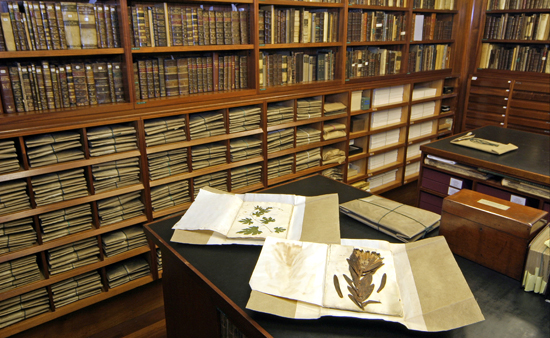
The collections were obtained by the Society in 1829 and are today securely held in a vault below the courtyard of Burlington House, Piccadilly in central London. Leather bound books, old parchment folders and specimen trays line the carefully curated shelves and drawers.
Also in the strongroom was a very rare (and valuable) signed first edition of Charles Darwin's 'Origin of the Species' - a once-in-a-lifetime opportunity to see.
LINNAEA BOREALIS
Carefully wrapped in parchment was this original specimen of Linnaea Borealis, a wildflower of northern and alpine origin that has a distinctive double twin flower shape. The flower is named after Linnaeus as it was a favourite of his whilst travelling in Lapland.

As well as having a beautiful white pink flower, Carl Linnaeus fell in love with the wildflower for the way that it grew persistently in the undergrowth and its ephemeral, short-lived life. These were two symbols that he felt were important in his own life and portraits of Linnaeus, including the one above, and in the Society all feature the Linnaea Borealis.
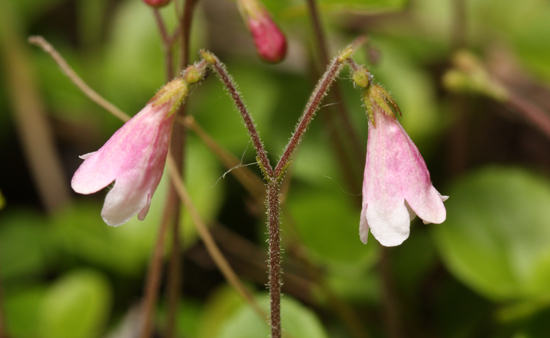
This little flower has a special meaning for Winterson as it was an inspiration for our own flower motif, also honouring its link with Linnaeus and his early achievements in culturing pearls.
LINNAEUS AND PEARLS
Linnaeus declared in 1761 that 'he had heard of people who made gold, but had never heard of any who could make pearls'. Describing the lengthy and time-consuming efforts to find natural pearls that he had seen in Purkijaur, Lapland, Linnaeus believed that a technique for culturing pearls existed that would be more effective and profitable for Sweden.
Linnaeus started to experiment with 'Unio Pictorum', a species of freshwater mussel called the Painter's mussel. This mussel was named as traditionally its shells were used by painters as convenient receptacles for mixing paint.
His technique was a variation of an old Chinese method for producing blister pearls. Drilling a hole in the mussel's shell, Linnaeus inserted a small granule of limestone between the mantle and the shell to help produce a free spherical pearl inside the mussel.
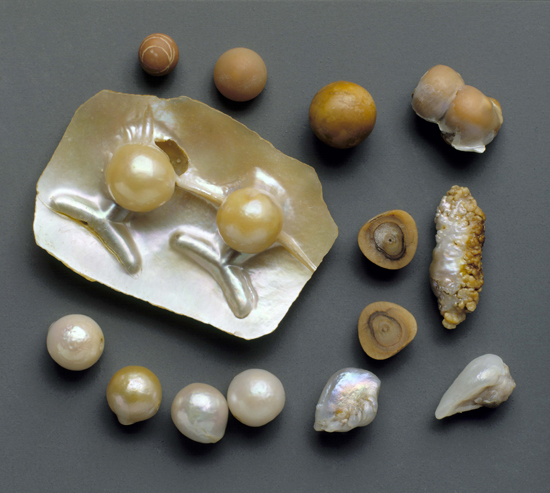
The mussels were returned to the riverbed for six years to produce what is regarded as the world's first spherical cultured pearls. They are indeed historic and fascinating to view.
Linnaeus' method is also based on an old misunderstanding that pearls are created with a grain of sand. We know now that a response to illness or a parasite is the more likely explanation for the growth of natural pearls in an oyster or mussel.
These experimental pearls were not ultimately the source of riches that Linnaeus had hoped for, but he was enobled by the King of Sweden for his efforts taking the title von Linné. The pearls, a patent and Linnaeus' secret were sold to a Swedish merchant named Peter Bagge, but nothing came out of this venture.
Another Londoner Sir John Hunter is recorded as having attempted to culture freshwater pearls in his ponds at Earl's Court Manor House using a similar method to Linnaeus, but it was left to a different Englishman William Saville-Kent to make the next break-through in pearl culturing.
SEE THE LINNAEUS PEARLS AT THE V&A
We would to like thank Elaine Charwat, Deputy Librarian of the Linnean Society for her fabulous help in showing us Carl Linnaeus' pearls.
The pearls themselves are on display soon at Pearls, the V&A's new exhibition. Not to be missed...
-
What are Peacock Pearls?
What are Peacock Pearls?
The very name itself - Peacock Pearls - conjures up an image of an iridescent, beautiful gem with a myriad of shimmering colours. Are these pearls real and what are the qualities that give Peacock Pearls their colourful name?
A peacock pearl describes one of the most valued and sought after colours of a type of saltwater pearl called the Tahitian pearl, which are cultured in French Polynesia in the black-lipped oyster Pinctada margaritifera.
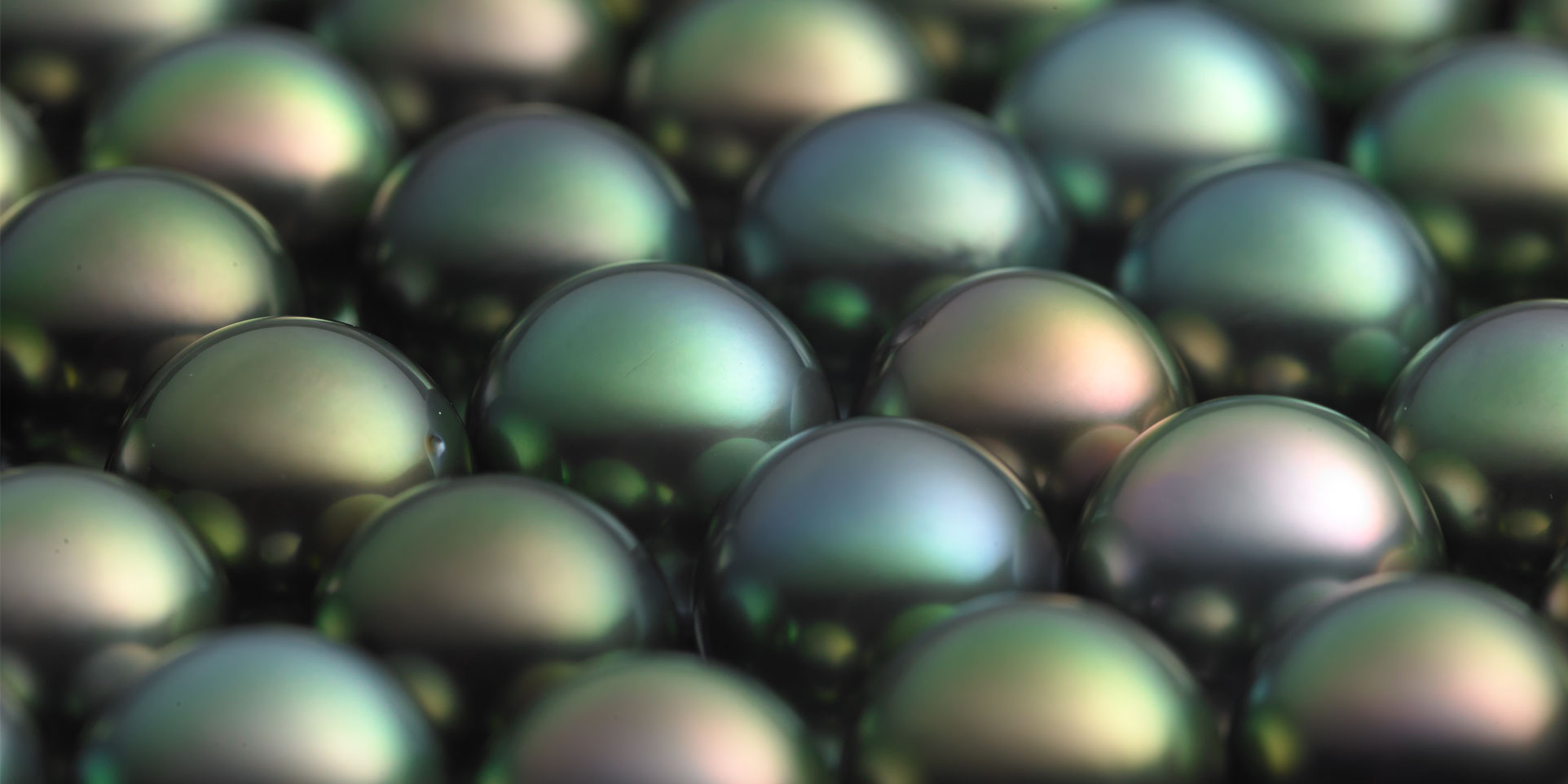
Image: Peacock Tahitian Pearls
With a dark grey-green body colour, a true peacock pearl will have a pink, purple or golden overtone of colour that appears to float on the surface of the pearl as the light catches it. These natural iridescent colours are achieved without any artificial dye or treatment.
What causes these special colours?
The dark body colour of the Tahitian pearl comes from the pigments and trace elements in the water that the oyster lives in.
The reason for the colour and strength of the overtone of each pearl, however, also depends on other factors. Scientists believe that the peacock's striking plumage is thought to be caused by the different ways that light is reflected at angles by the structure of the bird's feathers. Just as with the peacock, the layers of nacre on the curved surface of a pearl can have the same effect.

Image 1: Enchanted Lagoon Earrings in White Gold
Image 2: Luna Moss Tahitian Pearl and Sapphire Ring
Optical interference creates the complexity of each pearl's colour. The shape of the pearl, and the thickness and transparency of its nacre, can contribute in varying degrees to the colour's intensity.
Artificial colour treatments for peacock pearls
Since pearls were cultured early in the 20th century, there have been many attempts to reproduce artificially the peacock colours of a Tahitian pearl.
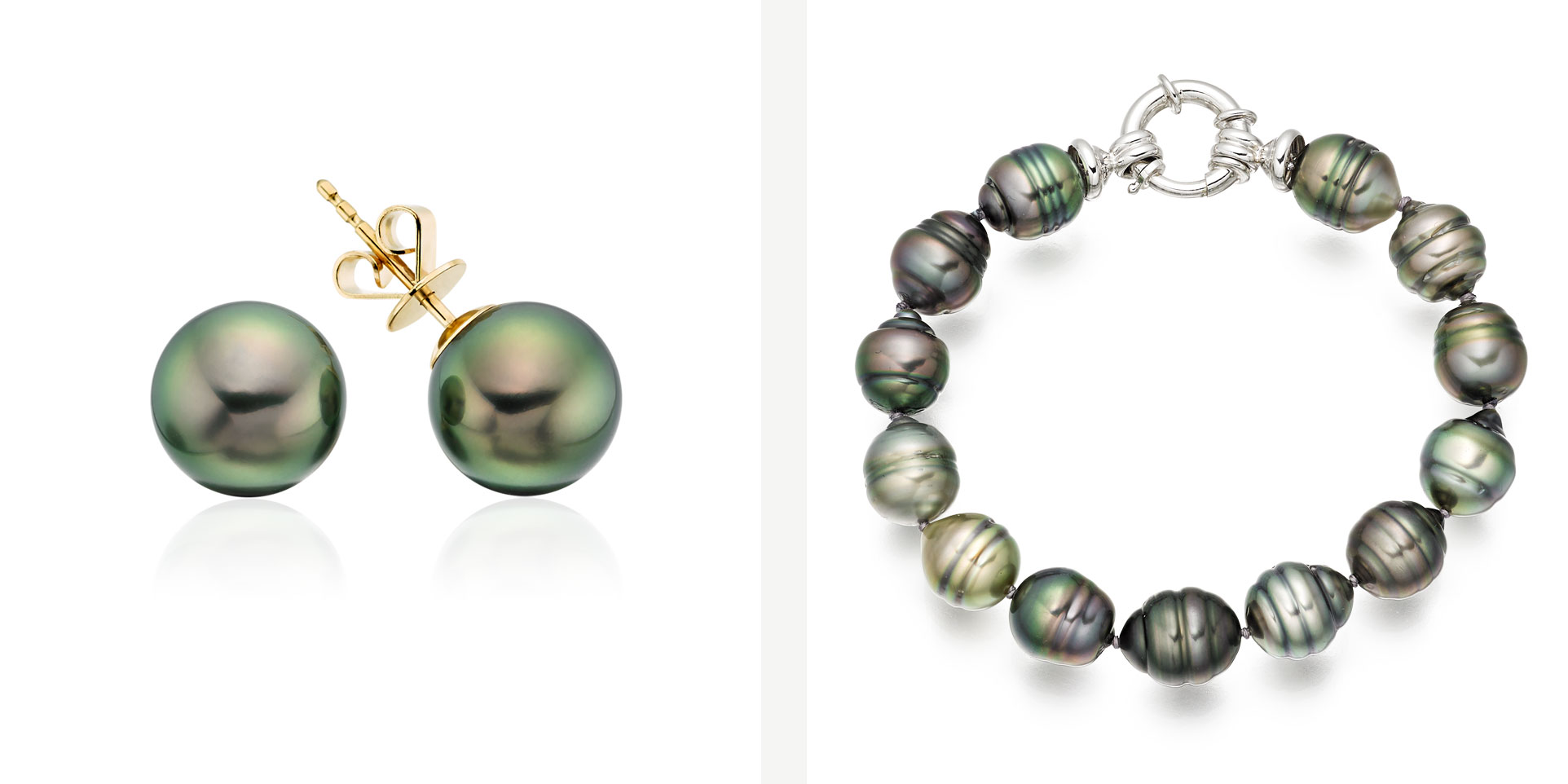
Image 1: Peacock Tahitian Pearl Stud Earrings in Yellow Gold
Image 2: Multi-coloured Baroque Tahitian Pearl Bracelet in White Gold
The exact techniques used are not well-known, but may involve the use of silver nitrate solutions to darken the pearl, other colouring agents such as organic dyes to produce a blue, purple, green or brown hue or gamma ray irradiation to darken the pearl itself.
Many black pearls sold today are Chinese freshwater pearls that have been treated. These treatments would be quite obvious to an experienced pearl expert or retailer as they are not an exact match to the real peacock colouring. Some dye treatments may also show some colour differences or fading over time, so ask your retailer if unsure.
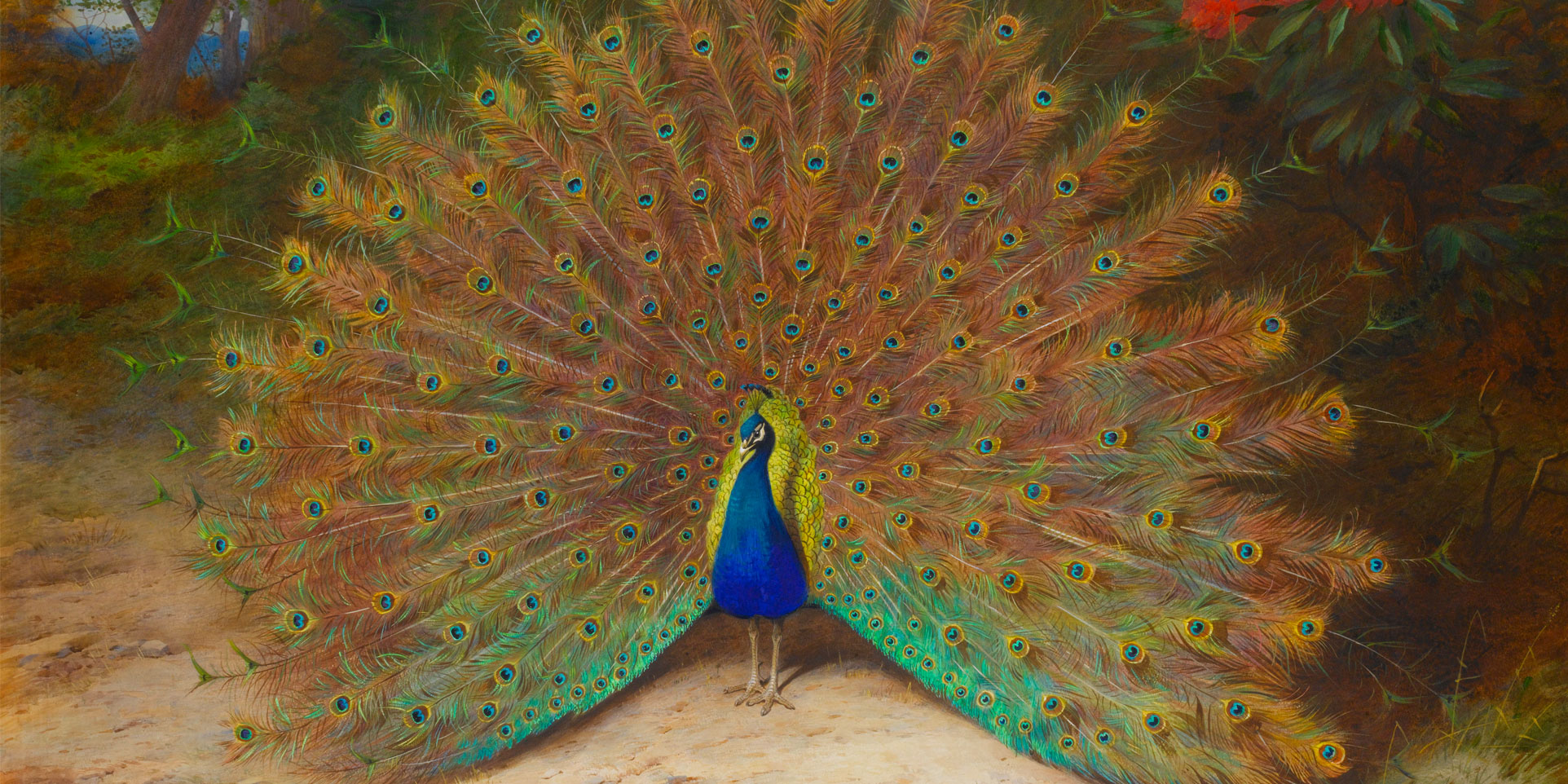
Image: Peacock and Peacock Butterfly, Archibald Thornburn, 19th century
Genuine Tahitian pearls are also prized for their relative rarity in comparison to freshwater pearls, and, like the silvery-white and golden South Sea pearls, are considered to be some of the finest examples of this extraordinary gem.
As with all rare pearls, this is reflected in their relative pricing, which is another way to distinguish this queen of gems from the dyed freshwater variety.
Proud as a peacock
We love the more natural colours and overtones of the peacock pearl and have a beautiful range of jewellery at Winterson that showcases the extraordinary natural rainbow overtones of these amazing peacock pearls.
Read our Journal article on Selecting Fine Pearls if you would like to know more.
-
Three Pearl Jewellery Sets for Brides
Three Pearl Jewellery Sets for Brides
At Winterson we offer three pearl jewellery sets for brides that will be perfect for wearing with most bridal outfits on your special day.
One of the most feminine and graceful colours, white became the traditional colour for brides to wear at weddings in Europe and America in the 19th century. A symbol of purity, innocence and grace, white continues today to be the most popular colour for a bride’s wedding day.
Pearl jewellery is a perfect choice to match the elegance of a white wedding dress. Pearls have unique properties. Their white and reflective surface will enhance the crisp brightness of a dress and flatter a bride’s complexion.
These classic and versatile pieces can also be enjoyed again and again as favourite items in any jewellery box and collection.
BRIDAL PEARL AND DIAMOND PENDANT AND EARRINGS SET
This elegant pendant is made with a white freshwater pearl in the shape of a teardrop, set with a sparkling diamond and presented on an 18 carat white gold chain. It is accompanied by pretty white freshwater pearl earring studs, that are also finished with 18 carat white gold.
This beautiful bridal set is a perfect finishing touch to a bride’s attire that will subtly accessorise the dress.
PEARL WEDDING NECKLACE AND EARRINGS SET
The classic look of the white Freshwater pearl necklace might be the irresistible choice for the bride-to-be. This wedding necklace and earring set is made with white freshwater pearls, which have been chosen for their excellent lustre and beauty.
The jewellery is finished with 18 carat white gold and the necklace is also available with a silver magnetic clasp.
CLASSIC AKOYA PEARL NECKLACE, BRACELET AND EARRINGS SET
Akoya pearls are a traditional type of pearl, originally farmed in Japan. They are characterized by their white color with an overtone of pink, making them an ultimate feminine gemstone.
This classic Akoya pearl necklace, bracelet and earring set is finished with 18 carat white gold and is one of our favourite bridal jewellery sets.
Visit our bridal pearl jewellery, wedding necklaces and bridal earrings collections for other exquisite designs and jewellery sets that will match the emotion of the occasion.
-
Choosing A Freshwater Pearl Necklace
Choosing A Freshwater Pearl Necklace
With there being so many varieties and types of freshwater pearls available today, if you are thinking of choosing a freshwater pearl necklace, there can be a few subtleties in choosing the right one.
To help you think through the options, here are five types of freshwater pearl necklace that might match your style or that of a loved one you wish to surprise with a gift.
CLASSICALLY PRETTY
The princess length white freshwater pearl necklace is a truly classic necklace. Made with round to near round freshwater pearls, typically ranging in size from 6.5 to 8.5 mm in diameter, this necklace will match nearly any style or colour.
Beautifully versatile, it can be worn casually with a pair of jeans or dressed up with a glitzy evening gown.
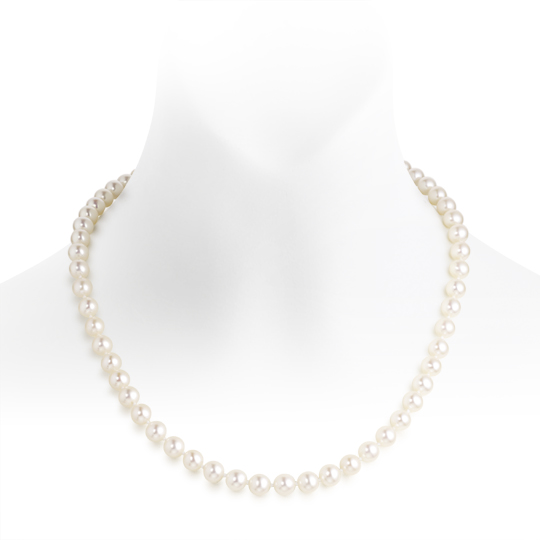
When choosing this jewellery box essential, look for a high lustre pearl, as the essence of this necklace lies in the reflective beauty of its pearls.
NATURALLY PASTEL
Freshwater pearls come in a variety of natural pastel colours - pink, lavender and orangey apricot. These soft colours combine with the shining nacre of the pearl to create subtle and elegant pearl necklaces.
A multicolour freshwater pearl necklace is feminine, easy to wear and will flatter any skin tone or light coloured outfit.
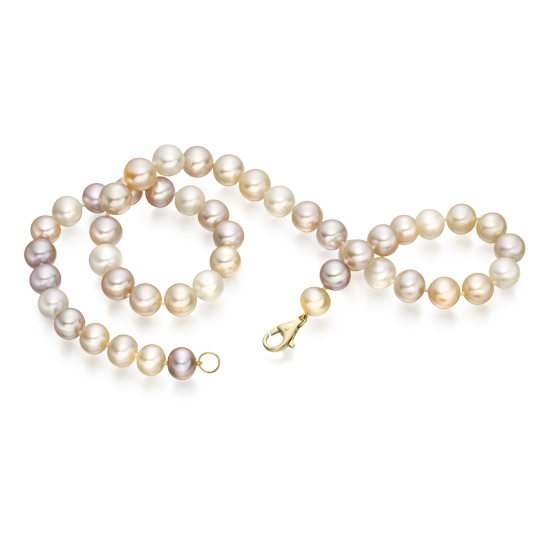
When choosing a colourful freshwater pearl necklace, our advice would be to avoid dyed or treated pearls as overtly bright or dark colours will have a less natural look, may fade gradually over time and will lose their feminine beauty.
MODERN BAROQUE
Alongside the round pearl, freshwater pearls may have more creative irregular shapes. Keshi pearls, as they are usually called, are formed as a result of pearl culturing techniques. At times overlooked by women, today quality keshi pearls with high lustre and clean surfaces are sought after by designers to make stunning pearl jewellery.
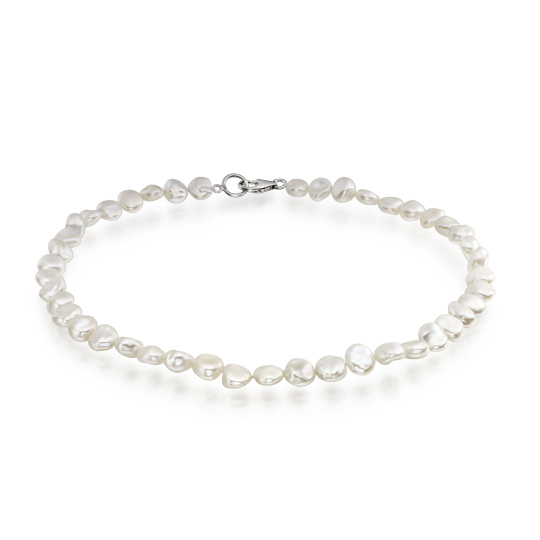
A keshi pearl necklace can add a contemporary twist to the classic pearl necklace and can be versatile and worn every day.
FLAPPER FASHION
Extending the length of a freshwater pearl necklace evokes a different era of fashion. The sautoir, or rope necklace, is 95 cm in length or more and can be strung with round or near round pearls, but also button or oval shaped freshwater pearls.
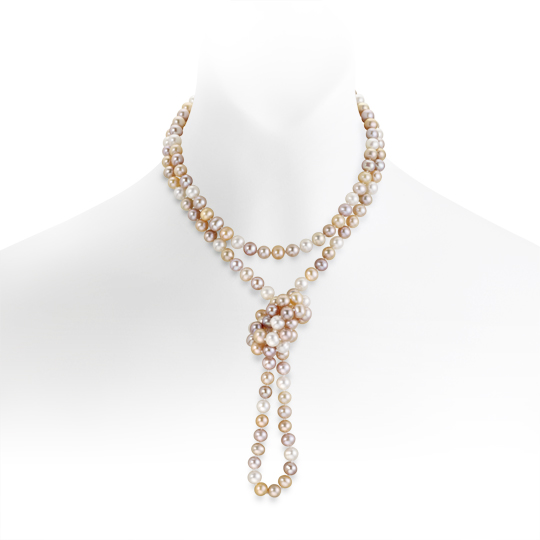
For a look reminiscent of the roaring 1920s, the freshwater pearl sautoir is a necklace that can be worn fluidly down to the waist, twisted up to three times around the neckline in multiple strands or tied in a knot at the front.
VINTAGE GLAMOUR
Smaller to larger freshwater pearls that are graduated in size from back to the front of the necklace can create a particularly elegant and refined necklace. The pearls should be round to near round in shape and carefully matched, usually from 5mm to 8mm in diameter.
For a more glamorous style, these graduated pearl necklaces may be strung together in multiple strands using a special type of clasp.
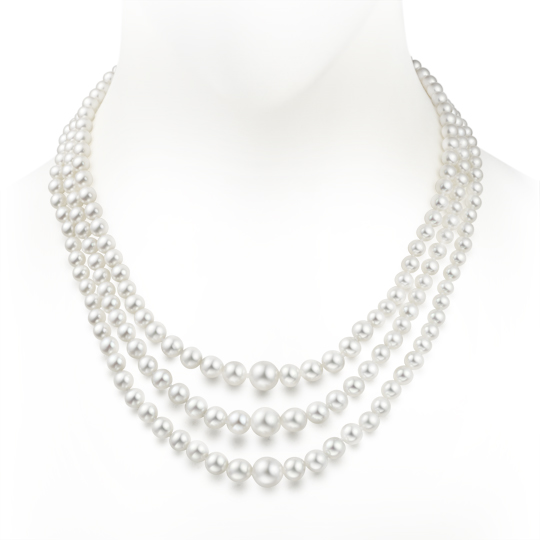
With this type of necklace, the matching of pearl sizes is important for its finesse, so look for a well matched and steady graduation.
-
What are the Best Pearls to Buy?
What are the Best Pearls to Buy?
With a heritage of working with pearls for over 50 years, one of the most frequent questions that we are asked at Winterson is what are the best pearls to buy. In this article we look at the most popular types of pearls and some tips to consider.
The classic pearl
The most popular image of the pearl is the classic round white pearl, draped in long elegant flowing strands, worn as a pretty stud earring or as a symbolic piece of jewellery for a new bride.
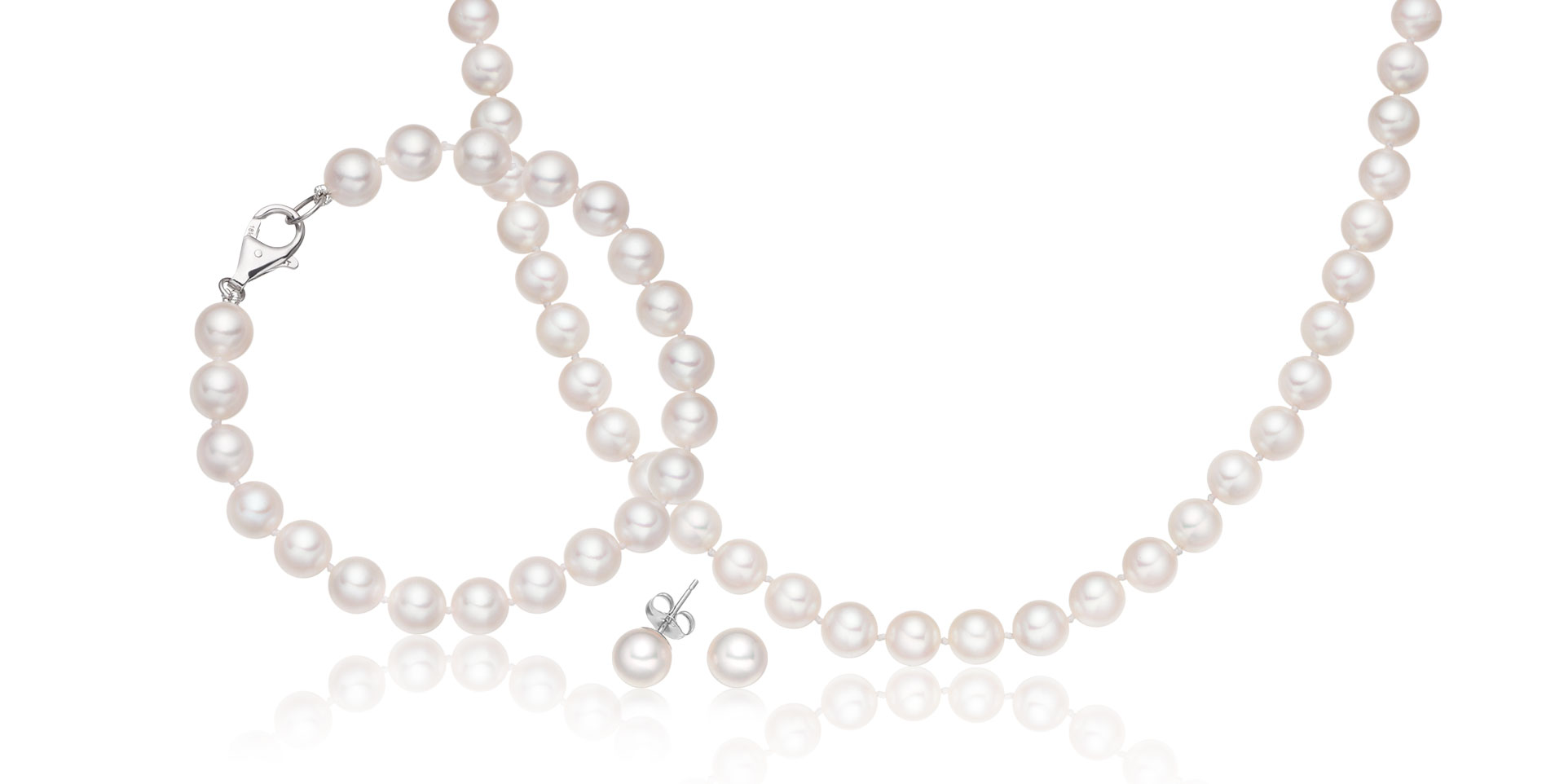
Image: Classic Akoya Pearl Jewellery Set
These styles will always be fashionable and versatile, but there are many other wonderful colours, sizes and shapes of pearls to buy. Before making a decision, it can be worthwhile exploring a little more about this beautiful gem.
Types of pearls
There are four main types of cultured pearl, including Freshwater pearls and three types of saltwater pearl known as Akoya pearls, Tahitian pearls and South Sea pearls.
Their size can range from as little as 1.5mm in diameter to as much as 20mm in diameter, with round, drop, oval and asymmetric baroque shapes. Their natural colours can include creamy whites, pastel shades of pink, peach and apricot, cooler hues of silver, grey, blue, purple and black and the warm opulence of gold.
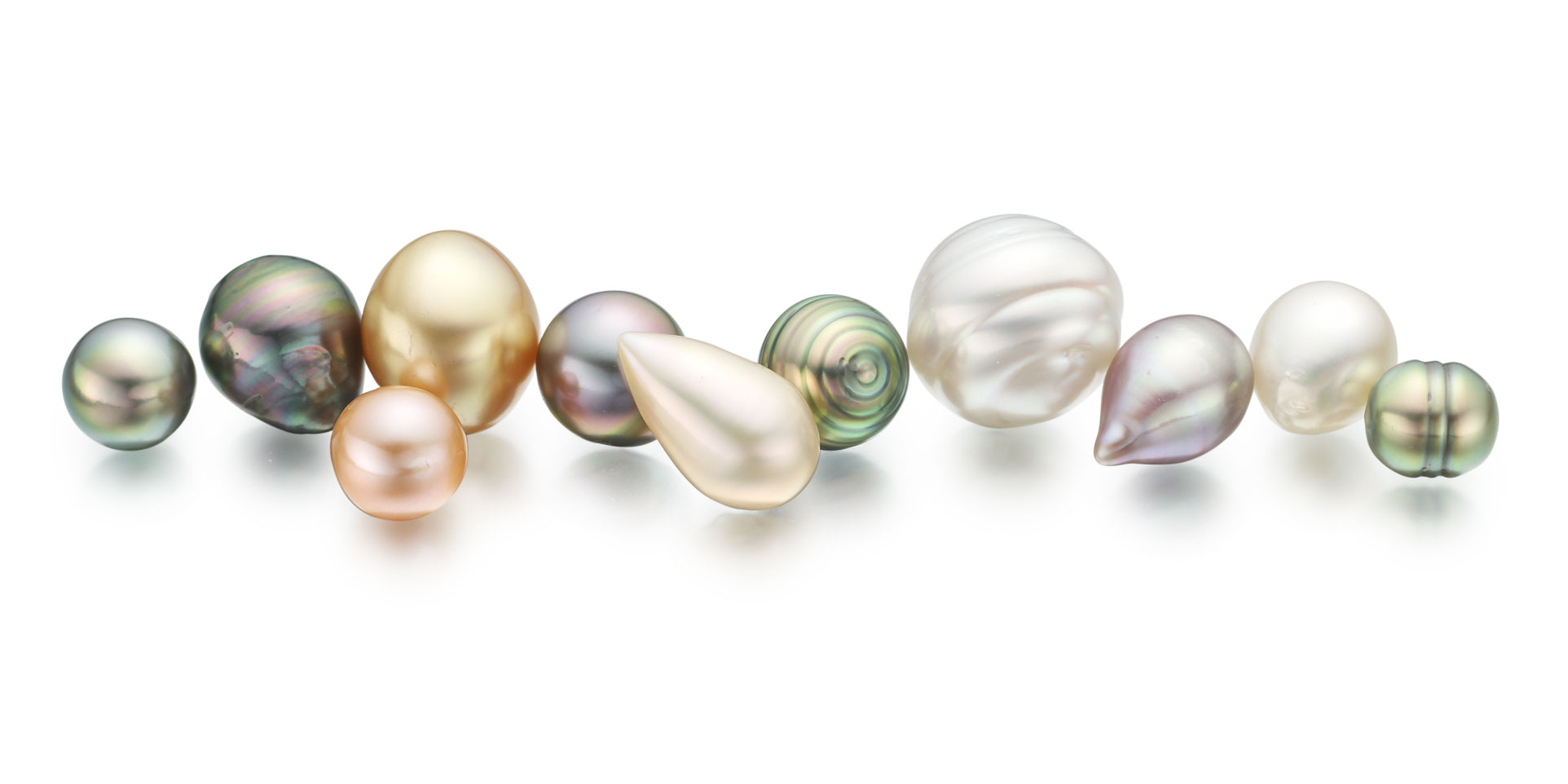
Image: Freshwater and Saltwater Pearl Shapes
Each pearl will also have been carefully cultured in a mussel or oyster for between 6 months and 3 years and their quality, uniqueness and rarity will increase their value. The difference in price between a small pearl with poor lustre and a perfectly round, excellent lustre pearl can be significant.
Is there a best pearl to buy?
There really is no straightforward answer as to 'what are the best pearls to buy' or 'what are the best pearls in the world'. If you are thinking of purchasing or wearing a piece of pearl jewellery, our advice would be to always consider the grading of the pearl, particularly its lustre, and how the design of the jewellery complements the pearl.
Pearl grading
Choose a piece of pearl jewellery that has been graded by an expert. There are several different grading systems used across the industry. We use the GIA Pearl Description System to describe the pearls in our jewellery, as this is one of the best known and reputable.
We also contract an independent organisation called Feefo to ask all our customers for their genuine feedback on each purchase from Winterson. This feedback is unedited by us and is published on our and Feefo's websites, acting as a marker of the quality you can expect from a Winterson pearl.
Do be careful when no information about a pearl is presented or when a pearl is described as being of AAAA quality.
The importance of lustre
Lustre is a grading factor that is used to describe how a pearl reflects light from its surface. This is one of a pearl's best qualities and is quite unlike any other gem. The best pearls to buy should have lustre that is sharp and mirror-like, catching the light and the eye.

Image 1: Freshwater Drop Pearl and Diamond Pendant in White Gold
Image 2: White Gold Diamond Leverback And Akoya Pearl Earrings
One of our favourite pearls is the classic Akoya pearl, which is admired for its stunning lustre, as shown above with our Leverback earrings.
Beautiful jewellery design
Our third recommendation would be to choose a design that shows off the best features of the pearl. For example, we love the way that our Luna Rose Tahitian Pearl and Sapphire Ring, pictured above, contrasts the round shape and unusual aubergine colour of the Tahitian pearl with the rectangular shape and candy colour of the pink sapphire gem.
Using colourful gemstones to draw out the pearl’s myriad overtones is one technique that we use at Winterson. You can read more about our design inspirations and how we work with colour here.
If you have any questions about the best pearls to buy, our jewellery or our website, our Customer Care team would be happy to help you. Or learn more about the different Types of Pearls in our Guide to Buying Pearls here.
-
Pink Pearls, Glamour and Lipstick
Pink Pearls, Glamour and Lipstick
Eternally feminine, the colour pink represents love, prettiness, cuteness and old-school glamour. Midway between the colour red and the purple hues of magenta, pink is the colour of cherry blossom, flamingoes and a girl's favourite things.
Pink is also one of the natural pastel colours of freshwater cultured pearls. With the unique iridescent properties of a pearl as it catches the light, the highest quality pink pearls will make truly beautiful and gorgeous pearl jewellery.
The reasons why a pearl is a particular colour is complex and not fully understood. The colour of a pearl generally corresponds to its type of mollusc and the colour of the inside of its shell. Water purity and environmental conditions may also have an influence. Trace elements such as iron and magnesium are thought to probably cause the pink body colour of a pearl.
The natural pink colour of freshwater pearls is soft, subtle, and certainly not loud. Some colour enhancements and organic dyes may be used to improve a pearl's appearance, but any colour treatment such as this should be fully disclosed to you. Check for pearls that have no variation in colour, dye that has collected in any pits or bumps on the pearl's surface, or which may be concentrated at the drill hole, and if in doubt ask your retailer.
Pink freshwater pearls are versatile gems that will flatter nearly any skin complexion with colour and shine, much as a line of soft coloured lipstick would. A beautiful pink pearl necklace will add a touch of colour to a little black dress or tone easily with an open neck purple or red top. Pink pearl stud earrings are delightful to be worn with casual weekend and evening wear.
Freshwater pearls are also formed in other pastel colours, usually called apricot, peach and lavender. A multi-coloured pearl necklace, combining the pastel rainbow of freshwater pearl colours, is also fabulous to wear.
-
Small is Beautiful - What are Seed Pearls?
Small is Beautiful - What are Seed Pearls?
The use of seed pearls in fine jewellery throughout the latter part of the 19th century was immensely popular. Elaborately decorated brooches, tiaras, pins and earrings were very representative of Victorian fashion at the time. In this article, we look at what are seed pearls?
A Fashionable Pearl
Seed pearls have long been admired by jewellers for their elegance and traditional style.
The example above of an exquisite Fabergé Egg, made for Nicholas II of Russia in 1901, stands just 12cm tall and is adorned with seed pearls. The famous French jeweller to the Tsars was known for crafting his jewelled masterpieces with precious metals, enamel, gems and delicate pearls.
Prestigious jewellers such as Tiffany, Cartier and Boucheron also studded their designs with these tiny gems to match the sensual decadence of La Belle Époque fashion.
How are these small pearls made?
The Formation of Seed Pearls
A seed pearl is a small natural pearl, formed in either a saltwater oyster or freshwater mussel, that is usually less than 2mm in diameter.
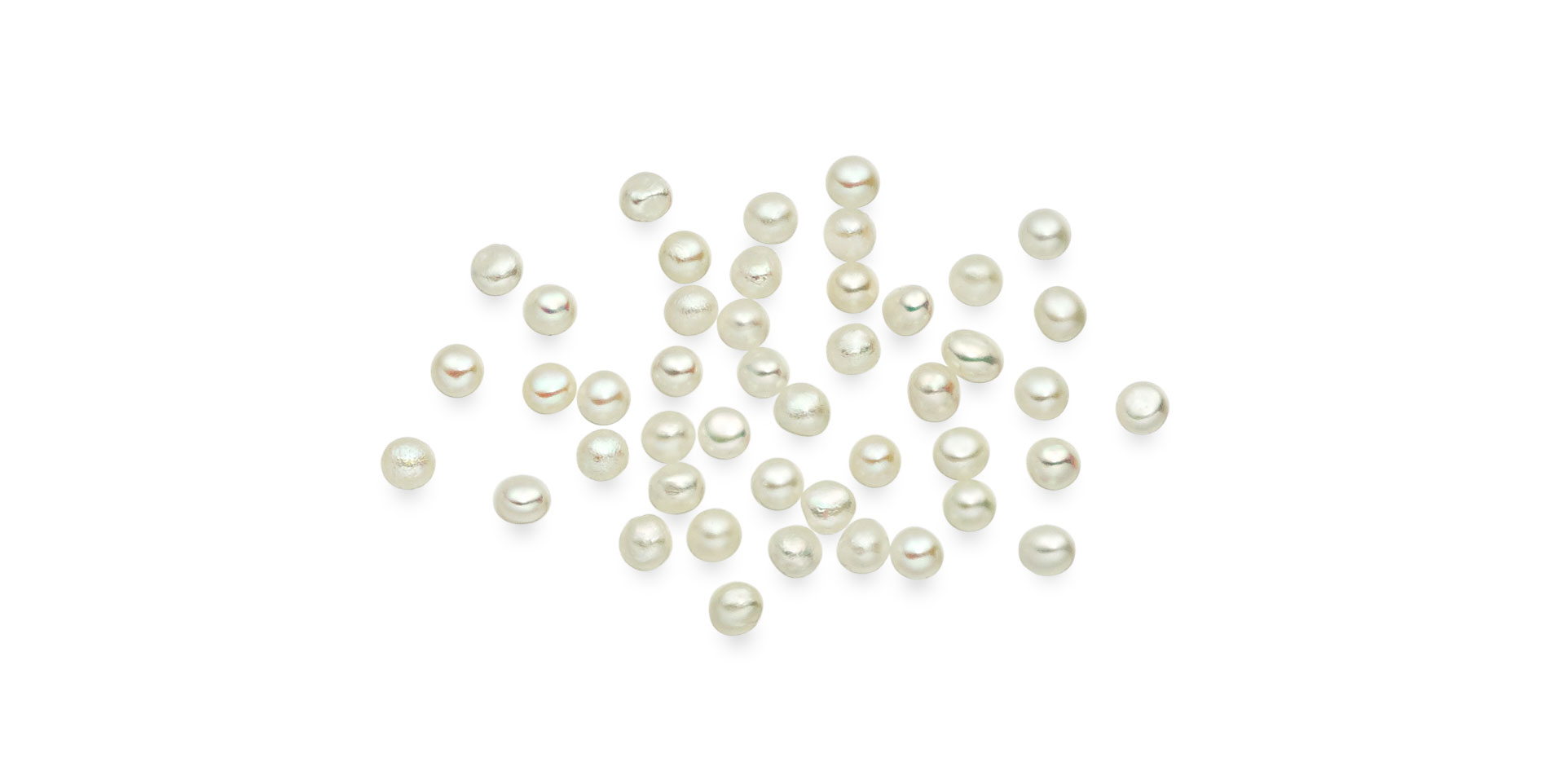
Image: Cultured seed pearls
These pearls would have been found when divers searched for natural pearls in the Persian Gulf and Asia, or closer to home in streams and rivers of the USA, Europe and the British Isles.
Today the term "seed pearl" is more widely used to describe a small pearl that has been created as a result of a pearl farmer trying to stimulate the formation of a cultured pearl in a mollusc.
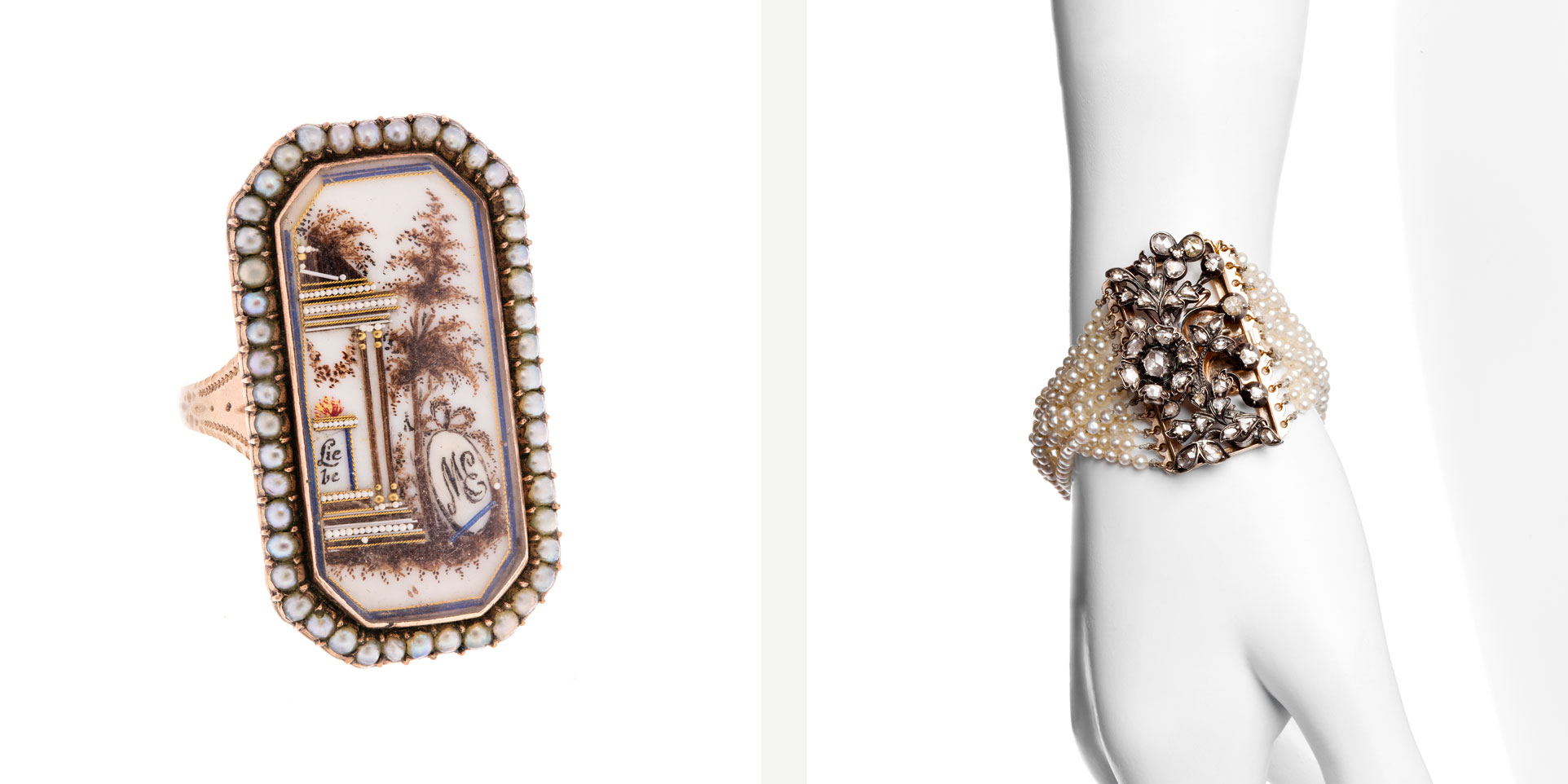
Image 1: Funeral Ring, Landscape and Temples, 18th Century
Image 2: Armband, Jacob Engelberth Torsk, Stockholm, 19th Century
These cultured seed pearls are formed with the accidental help of a loose piece of tissue in the mollusc, perhaps when the implanted bead has been separated from the pearl sac or has been expelled by the oyster.
Traditionally, the first cultured seed pearls would have been formed in Akoya oysters or Lake Biwa freshwater mussels in Japan.
Learn about the different Types of Pearls in our Buying Guide here.
Seed Pearls in Jewellery
Preparing such a tiny seed pearl for use in jewellery requires precision and a careful eye, particularly if the pearl is to be individually drilled and strung in a necklace or tassel earrings.
The famous Baroda Pearl Carpet, sold at auction by Sotheby's in 2009 for $5.5m, was covered with around 1.4 million seed pearls, all drilled by hand and sewn decoratively onto the fabric.
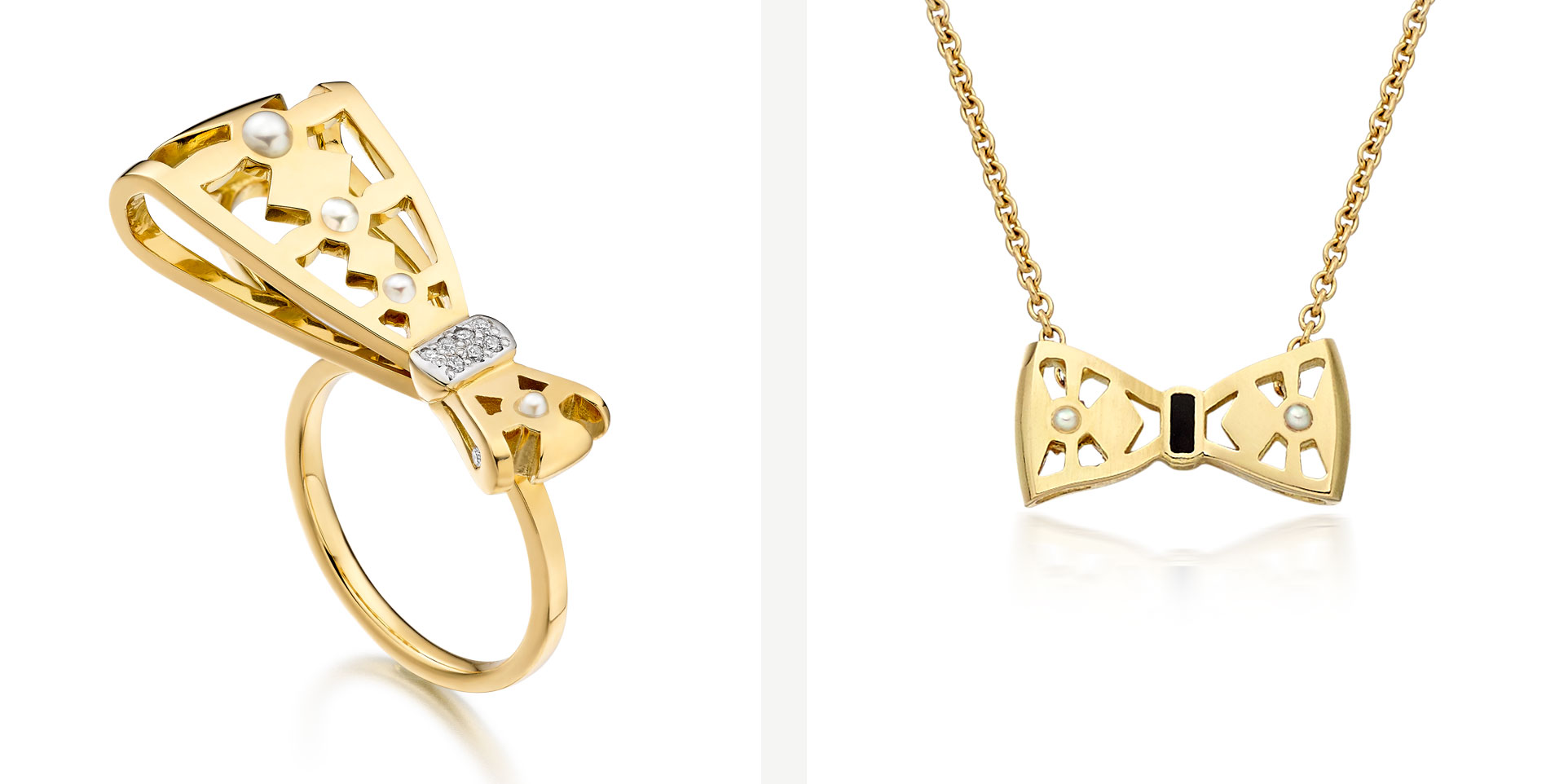
Image 1: Beau Seed Pearl and Diamond Ring with Yellow Gold
Image 2: Beau Seed Pearl and Enamel Pendant with Yellow Gold
Beau, our collection of pearl jewellery and pearl rings, inspired by the Georgian fashion for using seed pearls in jewellery, was designed by Alice Cicolini in 2013. The collection juxtaposes the delicate seed pearl with enamel and white diamonds, and uses the bow as its central motif.
We hope you will agree that Small is most certainly Beautiful!
-
What are Coin Pearls and how are these flat pearls made?
What are Coin Pearls and how are these flat pearls made?
Coin pearls are pretty flat-shaped cultured pearls that can be worn casually during the day and add a touch of individual glamour to the evening. Shaped as flat buttons or coins, the best quality coin pearls will shimmer with a beautiful pearlescence.
How are coin pearls made?
Coin pearls are cultured pearls mostly farmed today in China in freshwater mussels in river, lakes or streams. They are formed by the pearl farmer inserting a flat round nucleus into the mussel to help it form the shape of the coin pearl. The mussel will deposit nacre around this disc, often made of shell, so that there is an even thickness of nacre on both sides of the flat pearl.
The process can take up to a year before the pearl is ready. Choosing exactly when to remove the pearl from the mussel is important. Too soon, and the nacre will be very thin, with the shape of the disc nucleus being quite visible. Too late, and the pearl will begin to take on a baroque, non-symmetrical shape.
What are the qualities of coin pearls to look for?
Coin pearls are typically 10-12 mm in diameter, with all the amazing natural white, pink and peach colours of Freshwater pearls. The flat shape of the coins are perfect for jewellery as the surface usually exhibits strong lustre and the flat shape will lie against the skin easily.
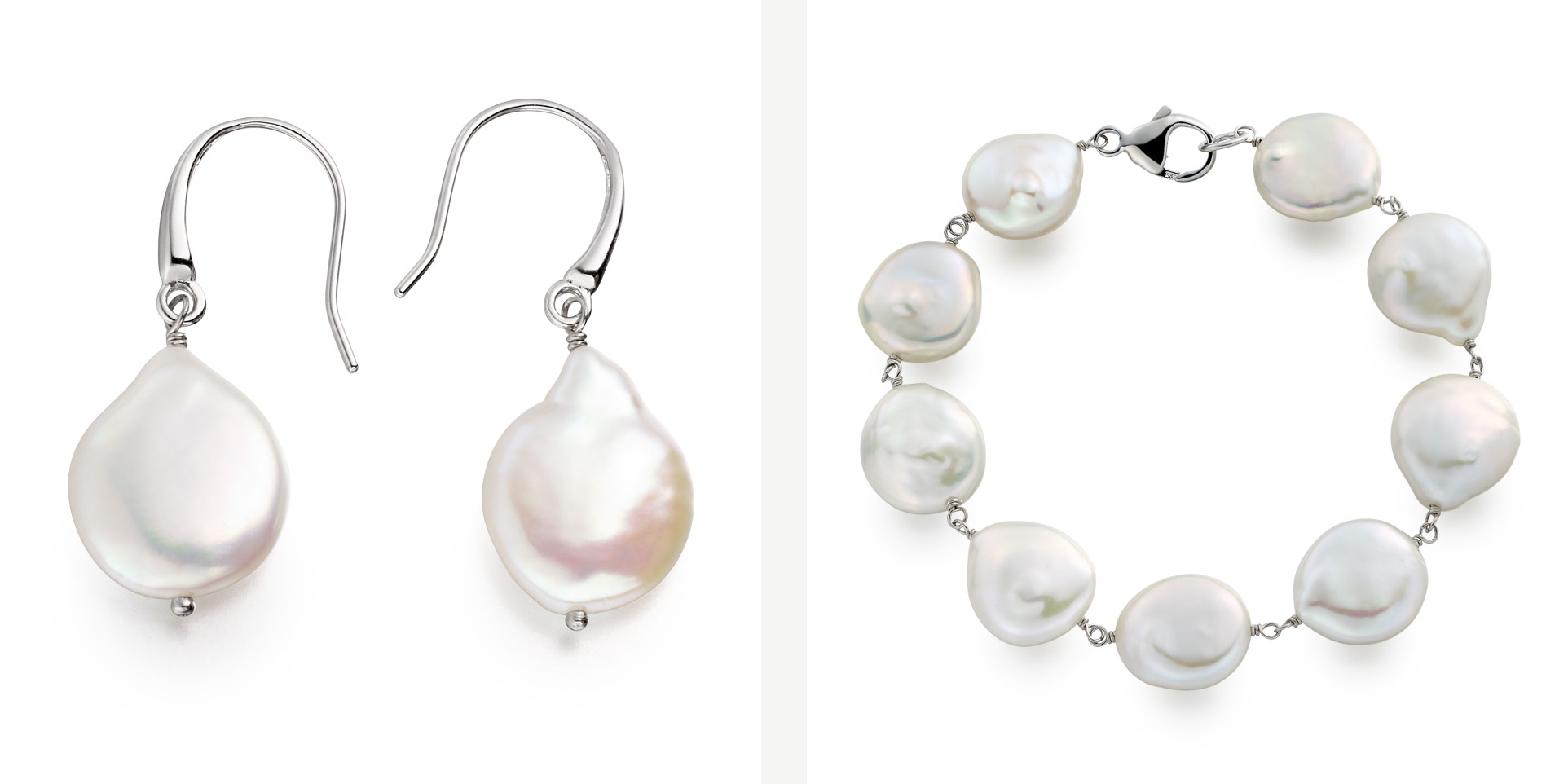
Image 1: Coin pearl earrings
Image 2: Coin pearl bracelet
The quality of coin pearls can vary significantly. When choosing a necklace or bracelet made from coin pearls, or a pair of coin pearl earrings, look closely at the quality of the nacre. If you can easily see the shape of the flat shaped nucleus within the pearl, it is likely that the pearl has been removed from the mussel too early and the thickness of the nacre is too thin. This may lead to dull lustre and the pearl may be prone to scratching or damage.
The highest quality coin pearls with a perfectly round shape, excellent nacre, excellent surface quality are sought after. They are typically bought and sold by specialist dealers.
We look for coins that have a thick coating of nacre. Often these pearls will have some shape or surface irregularities, such as flame-like tails or small bumps, but we love the way that these imperfections add to the character of the jewellery. Their flat shape will lie beautifully and comfortably around the neck.
If you are not familiar with pearls, view our collection of Freshwater pearl jewellery.
